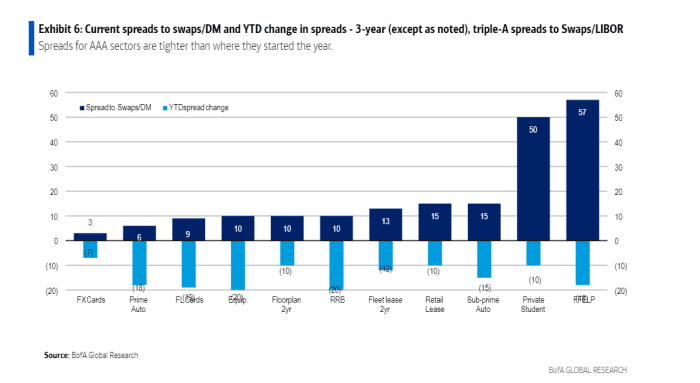This post was originally published on this site
Harley-Davidson has rolled out a new $605 million debt deal backed by loans to buyers of its iconic motorcycles, as the 10-day annual bike rally roars through Sturgis, South Dakota.
The world’s largest motorcycle rally has been shaping up to be the busiest in years, despite the recent surge in COVID-19 cases due to the more contagious delta variant, which has been hitting unvaccinated people the hardest.
The four-tranche Harley
HOG,
bond deal packages up more than 30,000 motorcycle loans to borrowers paying an average rate of interest of 7.36% on about $20,000 of debt each, according to a Fitch Ratings presale report.
In keeping with the hunt for yield, the bonds are expected to offer investors only a modest premium above a risk-free benchmark when they price later this week.
Specifically, price talk on Harley’s large $225 million A-2 class of AAA-rated bonds was circulated Monday in a range of 12 basis points to 14 basis points above a fixed-rate benchmark, according to a source with direct knowledge of the dealings.
Spreads are the level bond that investors earn above a risk-free benchmark to help compensate for default risk. Those levels have sharply declined this year for most bonds backed by U.S. consumer debt, even as households have gotten more comfortable spending — and using credit for purchases.
Spreads on consumer asset-backed bonds (ABS), from credit cards to subprime auto loans to student debt, have dwindled this year.

Bonds tied to consumer debt roar back.
BofA Global Research
The volume of U.S. ABS issuance also has come roaring back, with $171.1 billion of new bonds sold this year, a 56.4% increase from a year ago, according to BofA Global.
The rally in consumer debt comes as the trillions of dollars worth of fiscal and monetary stimulus rolled out during the pandemic has helped bridge many U.S. households through the crisis, including as the labor market has worked to recover from the worst shocks stemming from large-scale shutdowns in March 2020.
Gina Goetter, chief financial officer at Harley, said the motorcycle maker expects losses on its loans to “remain low through the remainder of this year,” given the “influx of stimulus funding and improved economic conditions,” in June during the company’s second-quarter results.
While motorcycle sales have been slowing in the U.S., 118-year-old Harley-Davidson has grown the size of its loan portfolio each year since 2011, to $6.28 billion as of the second quarter, in part due to the “financing propensity” of its customers, according to Fitch.
The motorcycle seller swung to a second-quarter profit that beat expectations and revenue that rose above forecasts. Net income was $206 million, or $1.33 a share, after a loss of $92 million, or 60 cents a share, in the year-ago period.
Harley shares were up 8.3% on the year through Monday, while the S&P 500 index
SPX,
was up 18% and the Dow Jones Industrial Average
DJIA,
gained 14.7% for the same stretch, according to FactSet.
Harley spokespeople did not immediately respond to a request for comment.

